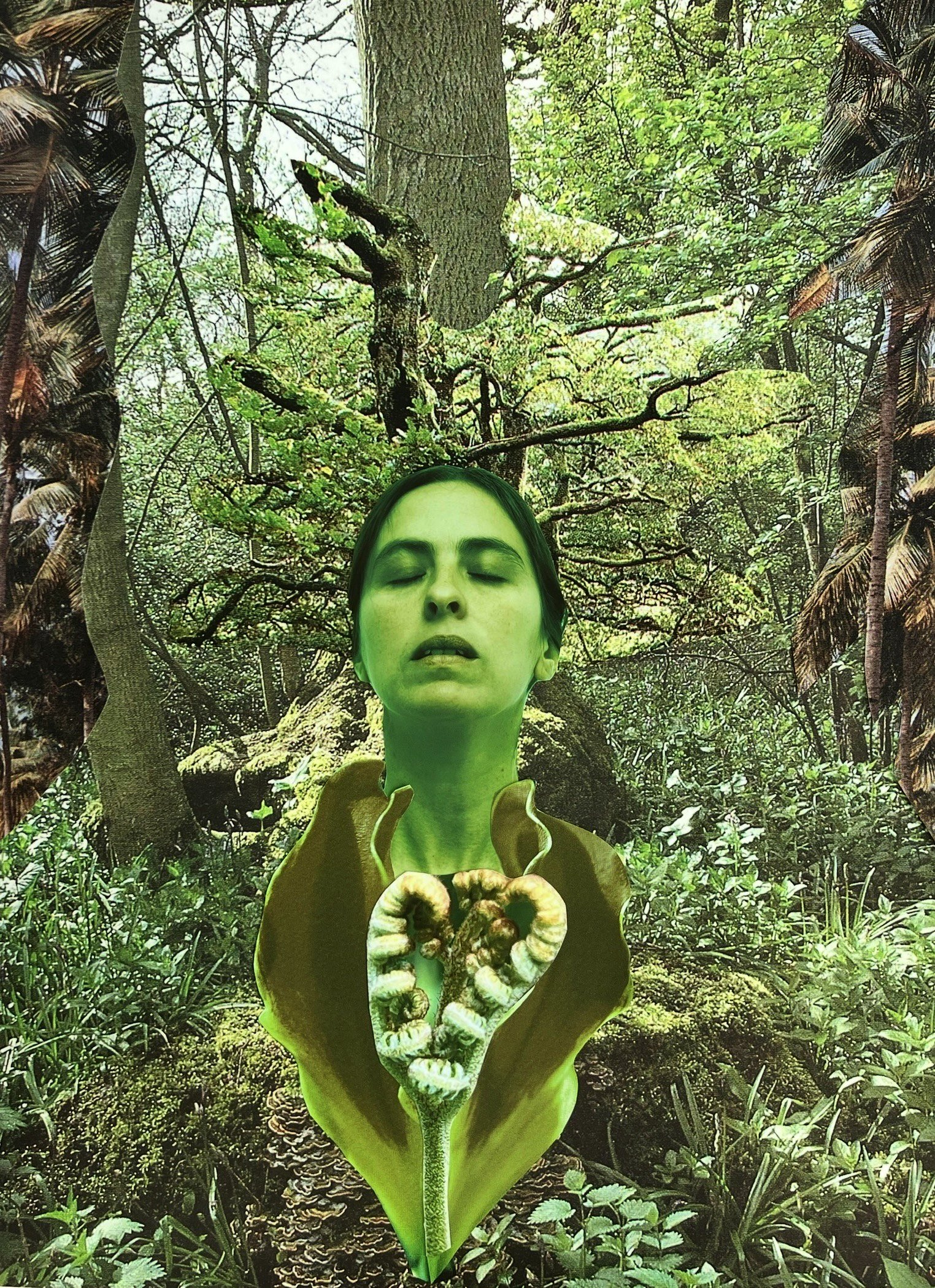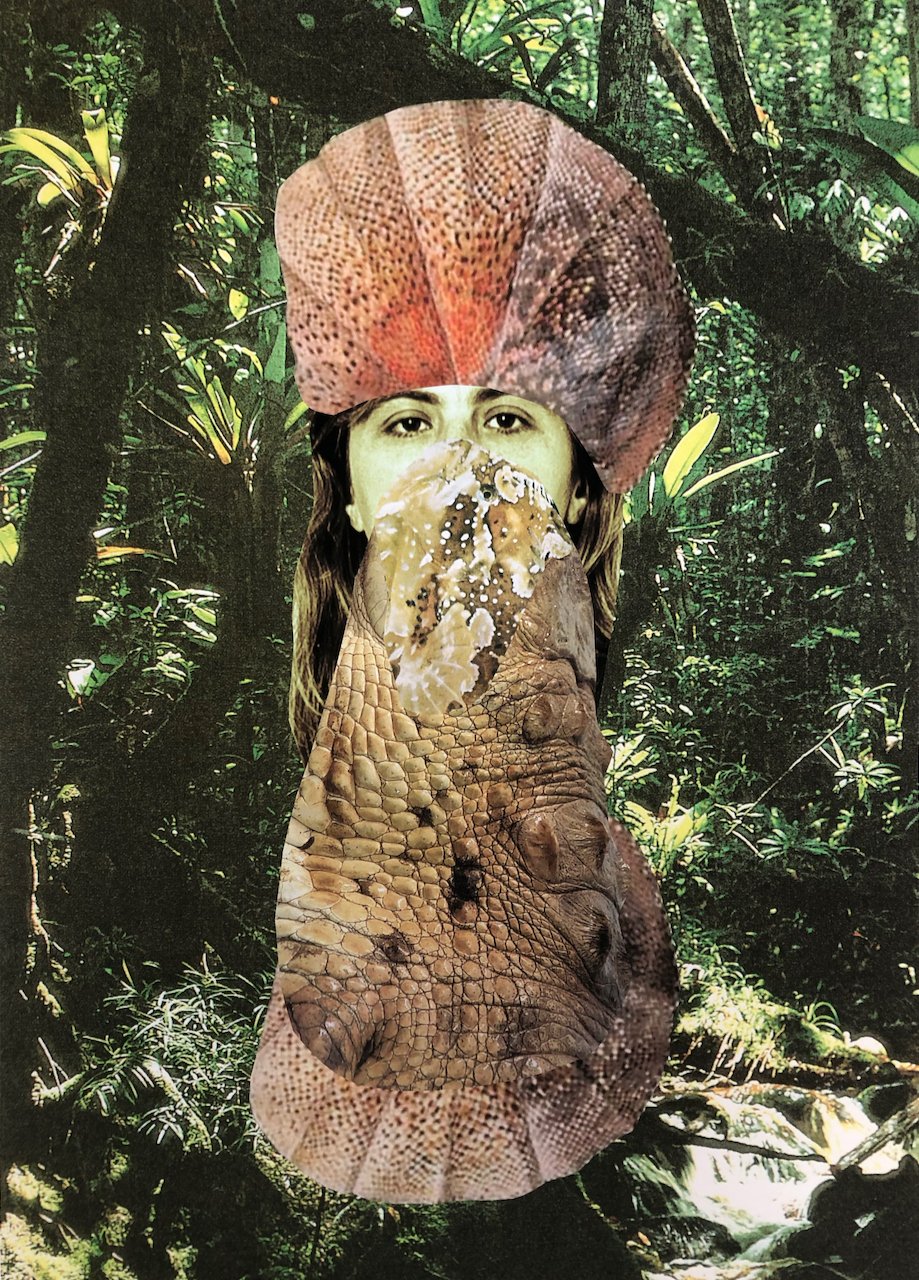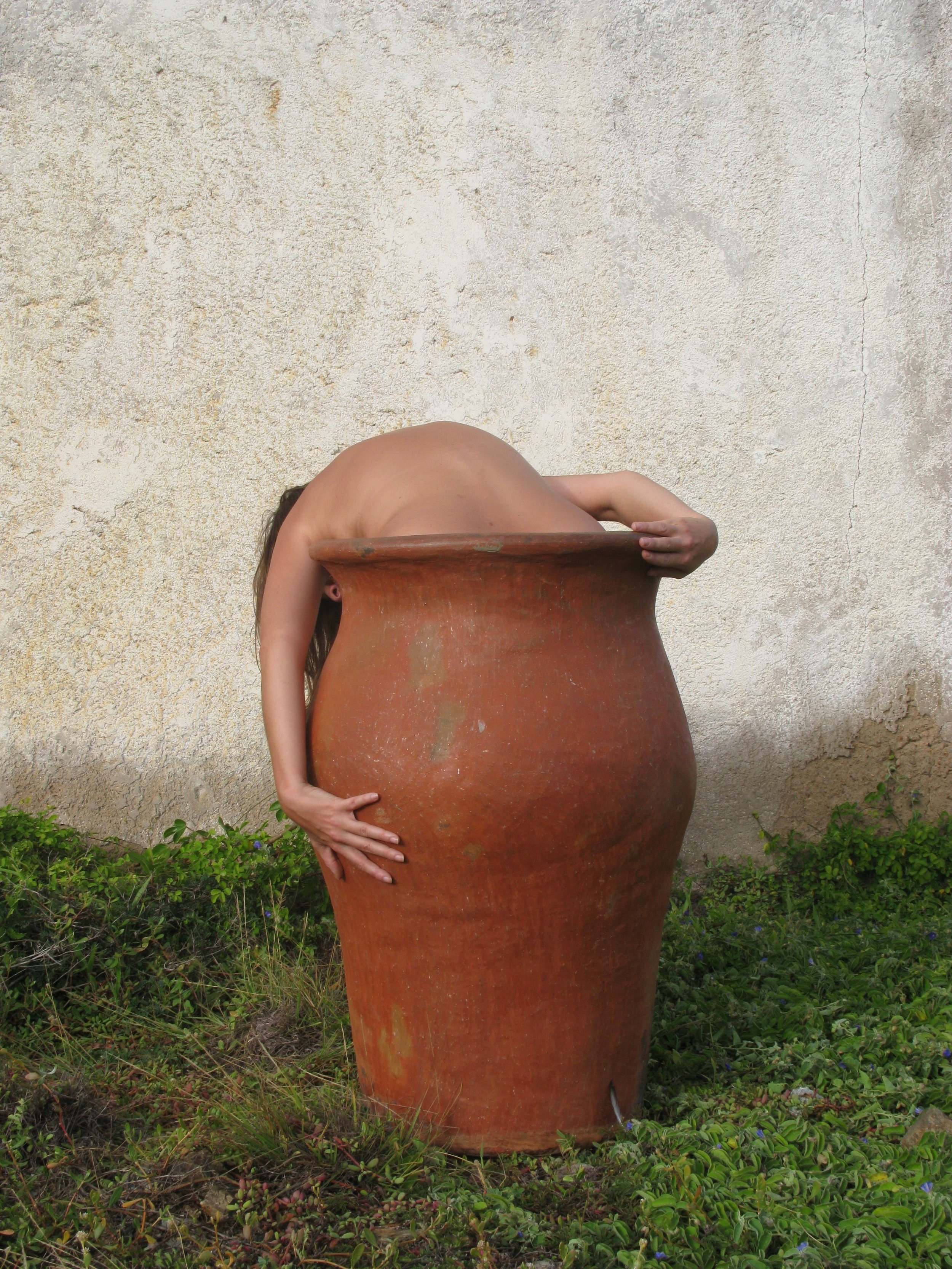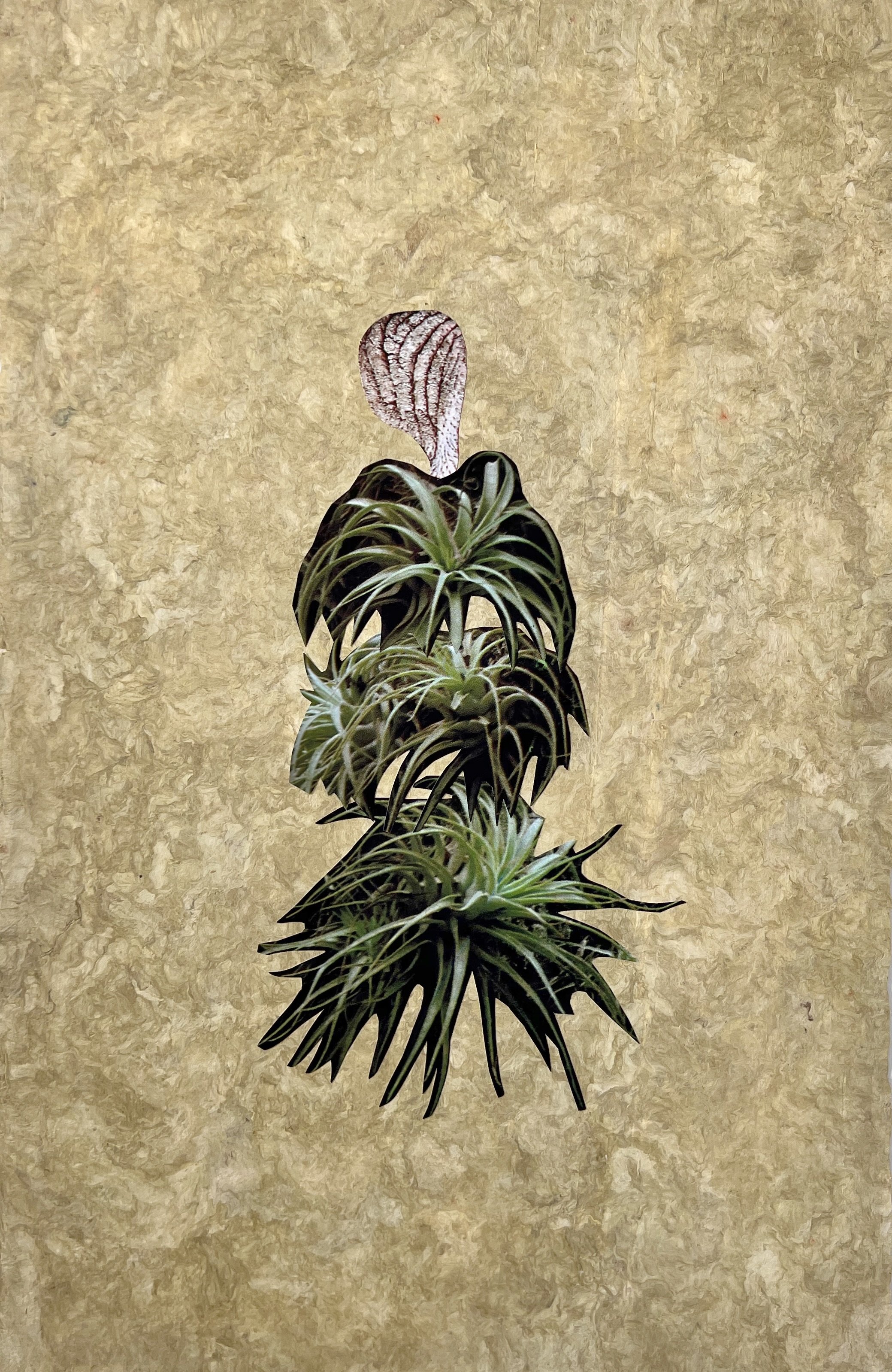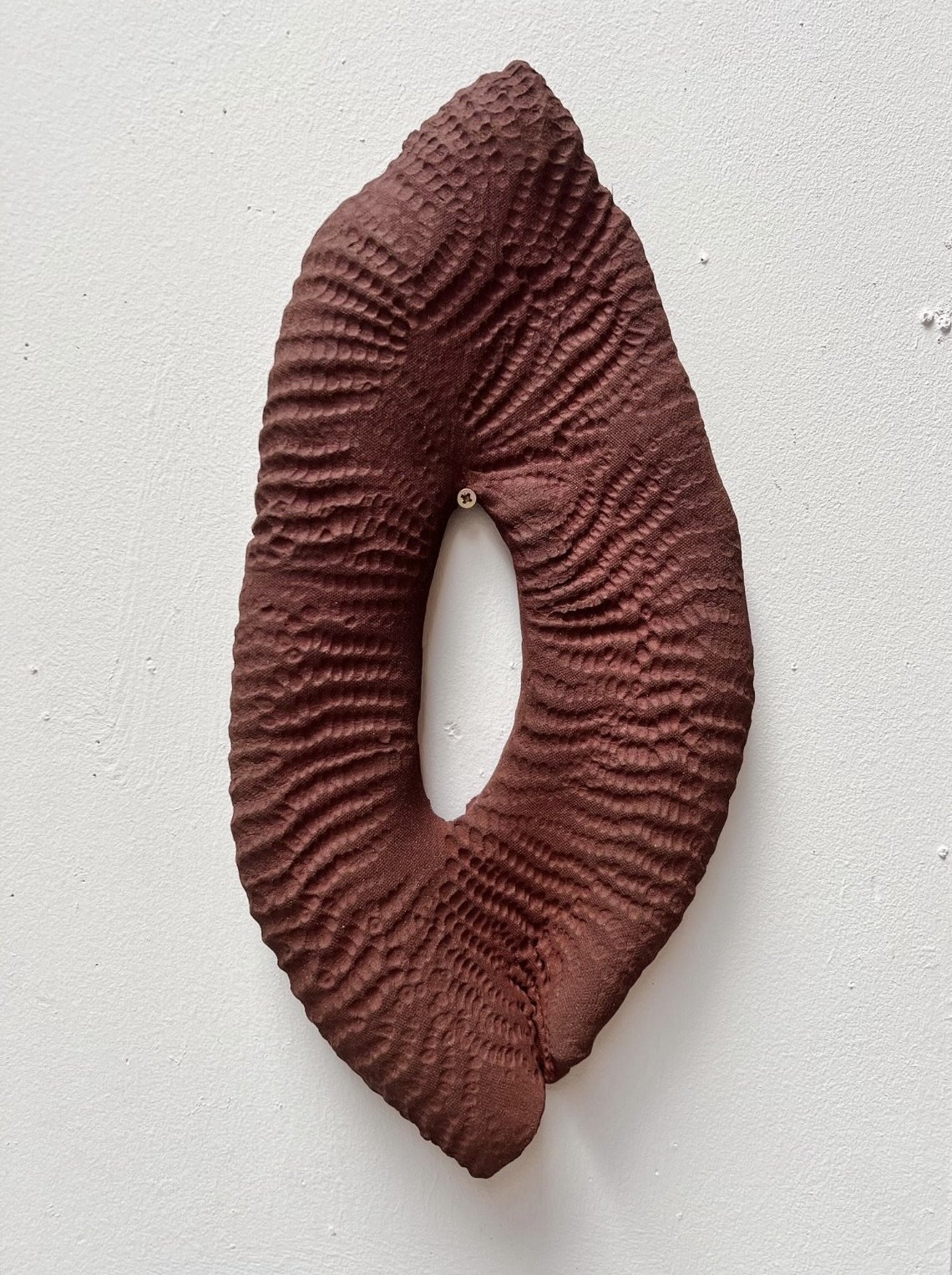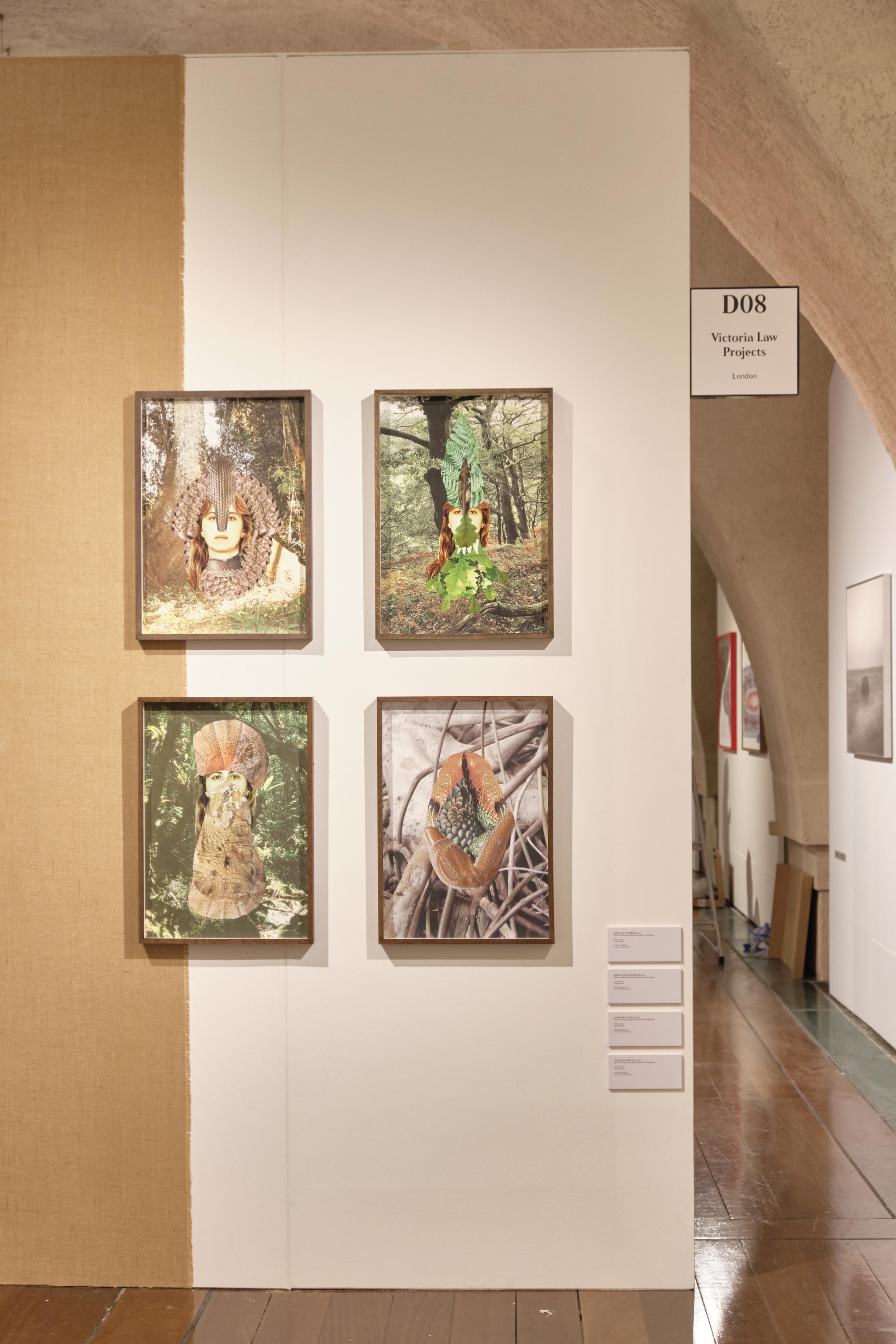PHOTO LONDON 2025
OF ROOTS AND VESSELS
A solo presentation of works by Lucia Pizzani
15- 18 May 2025, Discovery Section: D08, Somerset House, London
What are the connections between humankind and plants? The relationships that can be drawn between gender, body and nature? Weaving a conscientious dialogue between the self, corporeality and flora is the work of Venezuelan London-based artist, Lucía Pizzani. Working across photography, installation, performance and sculpture, ‘Of roots and vessels’, presented by Victoria Law Projects at Photo London 2025, presents a range of earlier to recent photographic, collage, and sculptural works that revisit human fragility from an environmental perspective. Interweaving aesthetics, cultures and histories, the selected works explore Pizzani’s use of her body as a medium, her 15 year-long experimentation with clay as an ancient material, as well as her knowledge of tropical plants and indigenous cultures.
Growing up in a family of artists in Caracas, Venezuela, Pizzani was exposed to a range of practices from painting to dance and performance. With familial roots in artistic expression, Pizzani has organically made use of her body as a medium, consciously incorporating in her practice a connectivity to our beings, skin, textures and presence. When studying at the Chelsea College of Art, Pizzani chose to centre her thesis on the topic of the vessel: this notion that it is something that materially holds but also can be held, both an object and something more animate, intimate and anthropomorphic. Thinking of the female body in particular, there is this notion of protection, carrying care, but also life.
Reflecting on this play and relationship with ‘the vessel’ is the photographic performance series ‘Cuencas’ (2013), presented along the centre wall of the booth. Previously exhibited at Hacienda la Trinidad in Caracas, Pizzani positions herself in a large red clay pot made historically in Venezuela’s Margarita Island, her body and face concealed except her arms and hair, which at once embrace the vessel and also free themselves from it. Hair dropping then flung, there is a dynamism, a voracious movement balanced delicately with a sense of retreat. Accompanying this more historic series is a singular work from the ‘Cuenca Womb Series’ (2024), in which Pizzani positions herself in a gigantic side-turned clay cauldron, her back to us, the faint silhouette of her profile meeting our gaze. Compared to ‘Cuencas’ there is a sense of bodily balance, an emphasis on held positioning rather than paced movement, as if there were a settled shift in the relationship between body and vessel.
Reflecting on this dialogue with corporeality from the lenses of nature and antiquity are an accompanying set of clay sculptures. Talismanic, they follow from Pizzani’s interest in material culture and research into compressed and pigmented earth being an indicator of a place as well as a form of non-verbal language. Having worked with clay for over fifteen years, it has equally become part of Pizzani’s expression, one she explored during her residency at LaunchPad in the South of France as well as Casa Wabi in Mexico. The two sculptures on the booth, ‘Virgen Tacarigua’ (2024) and ‘Tacarigua Rana’ (2024), cite the town of Tacarigua, a Lagoon in the northern coast of Venezuela, and translated from Spanish into English reference on the one hand the ‘virgin’ and on the other hand a ‘frog’. Delicately marked by seeds, the imprints on the black clay reflect the innate interconnectivity between plant and human life, our complex and delicate ecosystem of existence. They also nod to language, modes of adornment that extend to forms of communication, connecting the earth with what grows on it, from animal to plant and human life.
Balanced alongside these talismanic figures, on opposing walls, are two sets of solar prints or ‘Solares’ (2024). The works were first developed during Pizzani’s residency at Casa Wabi in 2021 and were created originally at the time of the summer solstice using the sun; seed pods and leaves are placed on paper coated with photosensitive links, and it is ultimately the sun that makes the image exist. This series reflects on the one hand an expanded approach to photographic practice: the use of the cyanotype. On the other hand, on a conceptual level, they nod to our need for the sun in order for plants to grow, for life to exist. Developed onto paper, the plants’ and seeds’ silhouettes come to the fore of the image. While two resemble more a series of masks, the others recall vessels or pods. Oval in shape, the orange duo also speak to the recurring oval motif in life: whether it be our mouths, our eyes, the vagina - different elements that symbolise and give life.
Finally on a singular wall are a series of collages. Three are from Pizzani’s ‘Acorazadas’ series, which translated from Spanish into English is the female attribution for being armoured (coraza means armour). A series that Pizzani started in the spring of 2020, during the height of the Covid-19 lockdown, she collected images from her travels to Margarita Island and beyond, such as magazines and images of herself. In each image one notes the outlines of a pangolin or armadillo, a sensitive response to the fact that pangolins were suddenly being described as carriers of the disease. Reflecting on this health crisis, Pizanni draws on her background as an environmentalist and highlights that such an occurrence in nature develops when natural habitats are not respected, and the mingling between man and nature isn’t measured. It equally prompts reflection on a wider crisis in the context of Venezuela, a country that has long been torn by national violence. These hybrid collages as such speak to a sense of protection; the creation of a second skin that holds and protects but also - at some point, like a snake’s - might be shed. This series is accompanied by a singular collage on bark, part of a later generation that focuses on the relationship between flora and fauna from the perspective of migration and spirituality, referencing in its name alone, ‘Colibri Deity’ (2024), the rare humming bird.
Ultimately, ‘Of roots and vessels’ provides an exploration around the thematics of grounding and holding; the sharing of space, and how this is done on a personal bodily level over to a social, environmental and historical one.
Text by Jenn Ellis
The booth will be hosting two events:
WORKS
Verde London Naciente, 2025 Hand cut collage with pigment ink prints on cotton paper 59.4 x 42 cm
Acorazada Caimana, 2020 Hand cut collage with pigment ink prints on cotton paper 59.4 x 42 cm
Acorazada Culebras, 2020 Hand cut collage with pigment ink prints on cotton paper 59.4 x 42 cm
Acorazada Resting, 2020 Hand cut collage with pigment ink prints on cotton paper 59.4 x 42 cm
Cuenca 2, 2013 C-Print on matt paper mounted on aluminium backing 100 x 75 cm Edition of 3 + 1 AP
Cuenca 3, 2013 C-Print on matt paper mounted on aluminium backing 100 x 75 cm Edition of 3 + 1 AP
Cuenca 4, 2013 C-Print on matt paper mounted on aluminium backing 100 x 75 cm Edition of 3 + 1 AP
Cuenca Womb, 2024 C-Print on matt paper mounted on aluminium backing 100 x 75 cm Edition of 3 + 1 AP
Palma Roja, 2024 Pigment ink print on cotton paper from solar prints (Cyanotype process with coloured inks) 48 x 36 cm
Palm vase, 2024 Pigment ink print on cotton paper from solar prints (Cyanotype process with coloured inks) 48 x 36cm
Máscara Guaja, 2021 Pigment ink print on cotton paper from solar prints (Cyanotype process with coloured inks) 120 x 100 cm Edition of 3 + 1 AP
Amarilla Solar, 2021 Pigment ink print on cotton paper from solar prints (Cyanotype process with coloured inks) 120 x 100 cm Edition of 3 + 1 AP
Colibri Deity, 2024 Hand cut collage on Amate paper 80 x 60 cm
Tiña, 2024 Hand cut collage on Amate paper 60 x 40 cm
Tacarigua Rana, 2024 Black stoneware clay 36 x 33 x 18 cm
Virgen Tacarigua, 2024 Black stoneware clay and dry palm fibres 30 x 18 x 40 cm
Roja Ovalo, 2023 Red stoneware clay 43 x 21 x 4 cm
Negro y Rojo, 2025 Black and red stoneware clay 60 x 15 x 4 cm
INSTALLATION
PRESS
MY LONDON Emma Bowkett, Financial Times Weekend Magazine, May 2025
PHOTO LONDON TURNS 10 - AND EYES A NEW CLASS OF COLLECTORS The Financial Times, April 2025
SPOTLIGHT LUCIA PIZZANI Championed by Victoria Law The Wick, 14 May 2025
PHOTO LONDON: ALL YOU NEED TO KNOW ABOUT THE 10th ANNIVERSARY Vogue Photo, 9 May 2025

